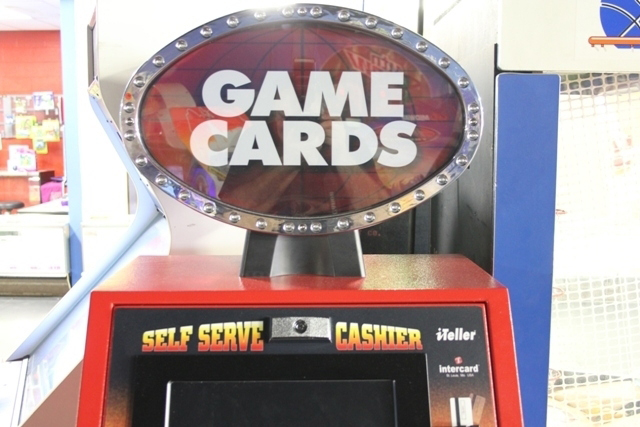Cashless Card Systems
Universally Accepted and Universally Underutilized

by Howard McAuliffe, Partner, Pinnacle Entertainment Group
Cashless card systems, often referred to as “debit card systems” in the industry, are probably the greatest innovation since the video game. Card systems are standard in FECs today so much so that we haven’t opened a location for a client without a one in almost 10 years. Given the new inexpensive systems from Amusement Connect and our favorite, the iTeller Element system from Intercard, even route locations with 10 games or less can affordably implement a card system.
Although card systems have been nearly universally accepted, they are also almost universally underutilized. As the country begins to open up and we start to rebuild, maximizing the use of the systems and tools we already have at our disposal is essential. Here are the top five features available in a good card system that are typically not used or underused:
1. Promotion Set-up and Tracking
Most FECs do promotions throughout the year. However, most do not set up the promo cards as a group and then use reports to track the success of the promotion.
For example, if I give out 300 $5 gameplay cards at a community event, I need to know how many of them were used, and furthermore, how much money was reloaded on those cards. This information is valuable for two important reasons. First, it helps me determine what offers are most successful. Second, it helps understand which groups to target with promotions going forward.
Another feature often not used in the system is a “bounce-back” offer, one that automatically goes onto the card after a set time. For example, every party or group can be given a card with a bounce-back offer that gives them $5 in gameplay starting the day after the party.
 2. Card Registration and Memberships
2. Card Registration and Memberships
Customer data is increasingly valuable in nearly every industry. The card system tracks card data, which can only be tied to customer data when the card is registered. The more cards registered, the more customer data we have. This allows us to understand their behavior, what they like, and how to contact them. We can use this data to improve offerings in the facility, as well as target marketing to individuals. In addition, we can create VIP programs and memberships once we know what customers want and understand their typical spending patterns.
3. Theft Control
Card systems offer multiple layers to control theft that are often not utilized. This starts with security settings. It is very important to set up each user with only the access they need to do their job. Once this is done, it is essential operationally to not share employee cards. Once access is set-up properly, reports can be used to manage employees.
In addition to basic cash tracking at the register and kiosk using end-of-day procedures, there are two additional areas where theft often occurs that are often not managed well. One is theft of merchandise, which can be managed by tracking tickets issued, tickets redeemed and the cost of goods sold. Tracking the ratios between these numbers allows you to see both operational issues and theft. The second major area for theft is from employees consolidating card balances and/or giving away credits. Both can be managed by using card consolidation reports and staff reports.
4. Redemption Inventory
Redemption inventory should be updated regularly. Many locations never update their inventory in the card system which creates operational problems (from not scanning items) and also opens the door for theft. Ideally, a physical inventory would be done each Monday, the system updated, and order placed with the redemption vendor. However, this can be a time-consuming process, and many locations choose to do this monthly instead. Regular inventory updating improves operations, cash management and limits theft.
5. Card Products and Packages
Most locations have card products such as $10, $20 and $50 with a bonus offer on the higher purchase levels. Many also offer time play and other packages. However, most locations do not adjust these offers and track the results. One simple example came three years ago when we started to test-offer the first purchase bonus at $25 instead of $20, finding that it didn’t decrease sales at the price point. We had thought that because customers would most likely have to input a second bill (a $20 and then a $5), we might see a decrease in sales. We found that there was no decrease, so we were able to increase the initial purchase at that price point by $5 or 25%. Pricing, bonus levels and packages should be changed periodically and the impact measured.
Hopefully, the above recommendations give readers a few ideas for optimizing their arcade using the card system they already have. An article could be written on each of the areas I mention above so if you are not entirely clear on the suggestion or have questions, please don’t hesitate to email me. In addition, your card system provider should be able to help you with all of the above, too. Further, I would also love to hear what features you feel are essential and have found increase your sales or efficiency. Cashless systems are incredibly robust and I learn something new about them constantly. I look forward to learning more from readers.
Howard McAuliffe loves to imagine and implement new products, business models, and ideas, and is a partner in Pinnacle Entertainment Group Inc. He’s an industry veteran who got his start in the business when he was just 16 and has 20 years of expertise in product development, as well as FEC and route operations. Howard’s wife Reem and young son Sami are the center of life outside of work. When he’s not working, Howard can be found enjoying the outdoors, hiking, fishing and mountaineering. Traveling anywhere new or to old favorites like the American West is a passion. Readers can visit www.grouppinnacle.com for more information or contact Howard at [email protected], he welcomes positive as well as constructive feedback and counterpoints.
